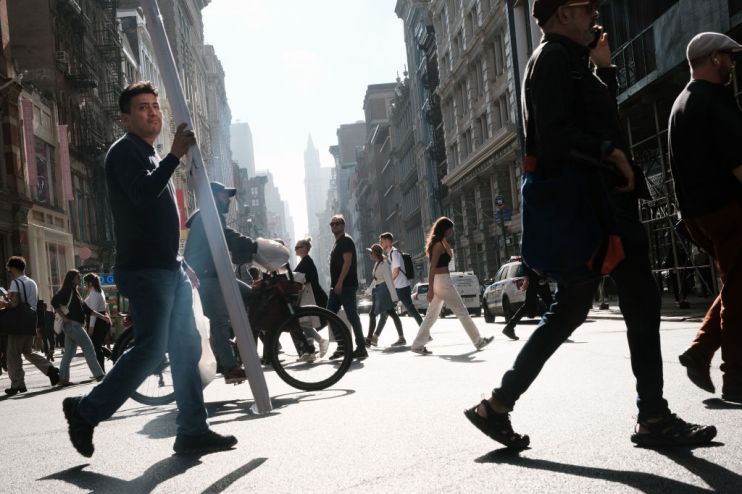Fed pivot hopes fade after US economy returns to strong growth

The US economy has surprisingly shaken off a series of steep rate rises, indicating the Federal Reserve’s campaign to tame historic high inflation is not over yet, new figures out today reveal.
Gross domestic product (GDP) across the pond climbed 2.6 per cent last quarter, swinging from a 0.6 per cent contraction in the three months to June, according to official US statistics.
The Wall Street Journal’s US dollar index, which measures the greenback against a basket of global currencies, strengthened 0.6 per cent on the news. US stocks opened higher.
The shock rise was mainly driven by a huge jump in exports, up over 14 per cent, suggesting the US economy’s underlying strength is shaky.
The US dollar has raced ahead of other major currencies this year, emboldened by the Federal Reserve lifting interest rates at the fastest pace since the early 1980s.
A strengthened dollar is likely to hit American trade due to it making the country’s exports less competitive.
“With the global economic backdrop unusually weak and the dollar soaring, the survey evidence suggests that exports will flatline or even fall soon,” Paul Ashworth, chief North America economist at Capital Economics, said.
Domestically, household and business finances are being “crushed” by Fed chair Jerome Powell and the rest of the federal open market committee tightening borrowing costs 75 basis points three times in a row, Ashworth added.
Slowing consumer spending in response to higher rates and prices will tip the economy into “a mild recession in the first half of next year,” he said.
The upside GDP shock strengthens the case for more rate rises by the Fed as it suggests the central bank’s rate hike cycle has yet to meaningfully dampen spending.
US GDP trend

The Fed is trying to incentivise consumers to save and make business borrowing more expensive to curb activity to realign supply and demand to tame inflation.
Prices are up 8.2 per cent in the US over the last year, with core inflation hovering around six per cent for the past few months.
Central banks have been forced to end years of ultra-stimulative monetary policy this year to control a historic price surge.
Next Thursday, the Bank of England is expected to raise borrowing costs 75 basis points, the biggest rise in its 25 years of independence. Prices are up 10.1 per cent in the UK, the fastest rise in 40 years.
Today, the European Central Bank (ECB) lifted rates 75 basis points for the second time in a row. Before a rate rise in July, the ECB had not tightened policy for over a decade.